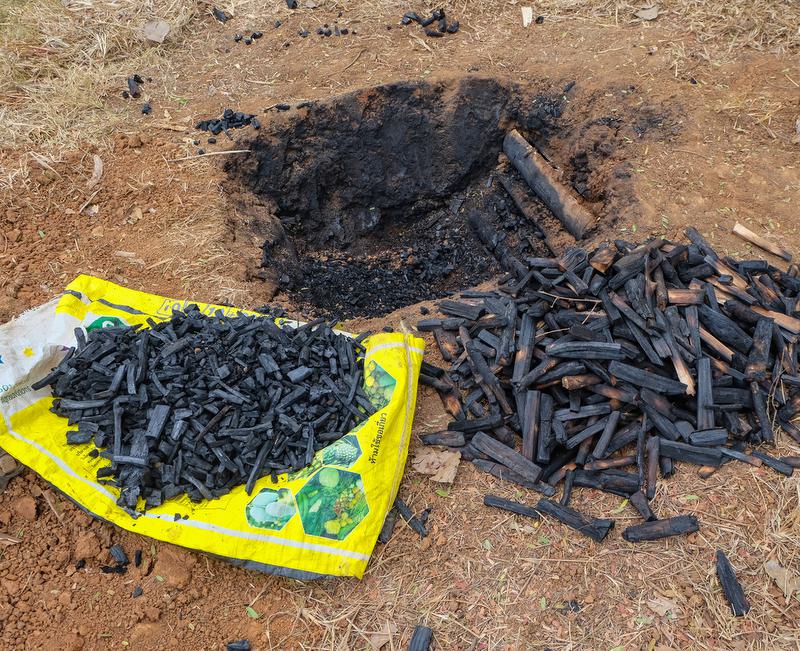Biochar in India

- 10 Aug 2025
In News:
India is set to launch its carbon credit trading market in 2026, with biochar emerging as a promising carbon dioxide removal (CDR) technology. Biochar is a carbon-rich, porous, and stable substance produced through pyrolysis (burning biomass without oxygen) ofagricultural residue and municipal solid waste. It offers multiple co-benefits spanning climate mitigation, agriculture, energy, construction, and wastewater treatment.
India’s Untapped Biochar Potential
- Resource base: India generates 600+ million tonnes of agricultural residue and 60+ million tonnes of municipal solid waste annually, much of which is burnt or dumped, causing air pollution and GHG emissions.
- Carbon removal: Converting 30–50% of surplus biomass can yield 15–26 million tonnes of biochar, sequestering ~0.1 gigatonne of CO?-eq annually.
- Byproducts:
- Syngas (20–30 MT): Can generate 8–13 TWh electricity, replacing 0.4–0.7 MT coal/year.
- Bio-oil (24–40 MT): Can offset 8% of diesel/kerosene demand, reducing >2% of India’s fossil-fuel-based emissions.
- Employment: Village-level pyrolysis units could create 5.2 lakh rural jobs, linking waste management with livelihoods.
Multi-Sectoral Applications
1.Agriculture and Soil Health
- Enhances soil organic carbon and fertility.
- Improves water retention, critical for semi-arid regions.
- Reduces fertilizer needs by 10–20% and increases crop yields by 10–25%.
- Cuts N?O emissions by 30–50% (273× more potent than CO?).
- Example: Andhra Pradesh’s Community Managed Natural Farming has piloted biochar to improve soil quality.
2. Energy and Fuel Substitution
- Syngas and bio-oil provide renewable energy for rural micro-grids and transport.
- Example: Maharashtra pilot projects use pyrolysis gas to replace diesel generators.
3. Construction Sector
- Adding 2–5% biochar to concrete:
- Increases mechanical strength and heat resistance (+20%).
- Sequesters ~115 kg CO? per cubic metre.
- Offers a green alternative to cement, key for India’s infrastructure push.
- Example: IIT-Madras research shows biochar-concrete mix lowers embodied carbon in buildings.
4. Wastewater Treatment
- 1 kg biochar can treat 200–500 litres of wastewater.
- With India producing 70 billion litres/day (72% untreated), biochar offers low-cost, decentralised treatment solutions for rural and urban areas.
